China Clay Images: This page contains pictures that were taken in the area. But I cannot exactly pinpoint where they were taken. Because I saw so much during 2016. Keeping track of everything was a bit of a nightmare.
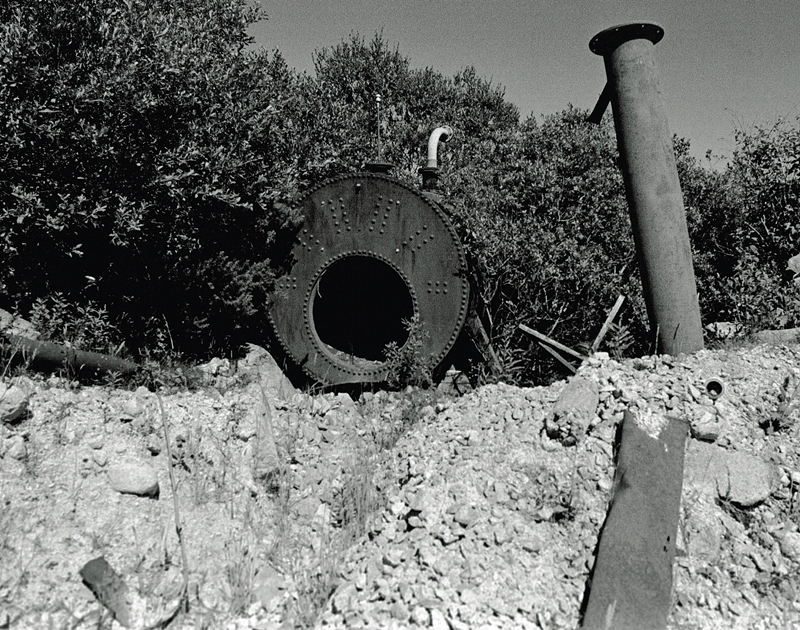
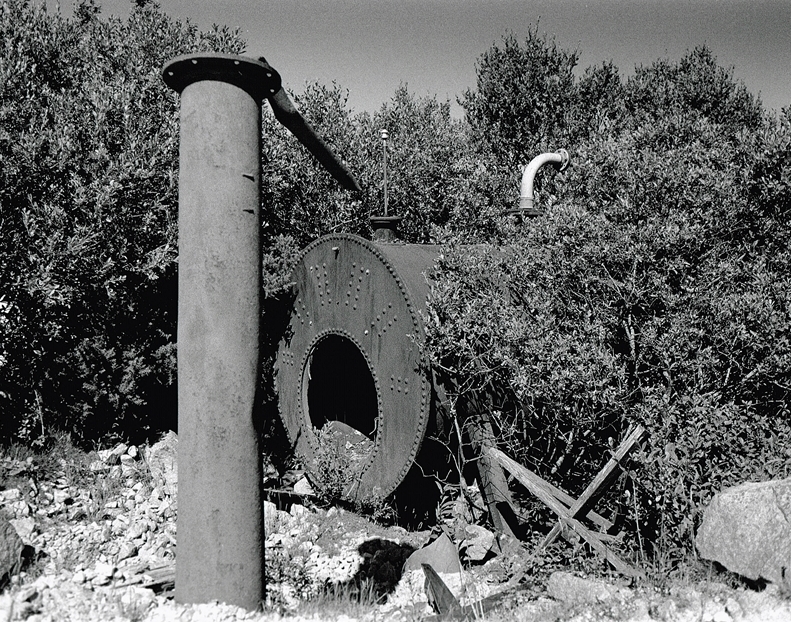

This next location was a disused processing plant in one of the pits. This place like so many I saw had just been abandoned. So much equipment just forgotten about, it was an amazing place to take photographs.


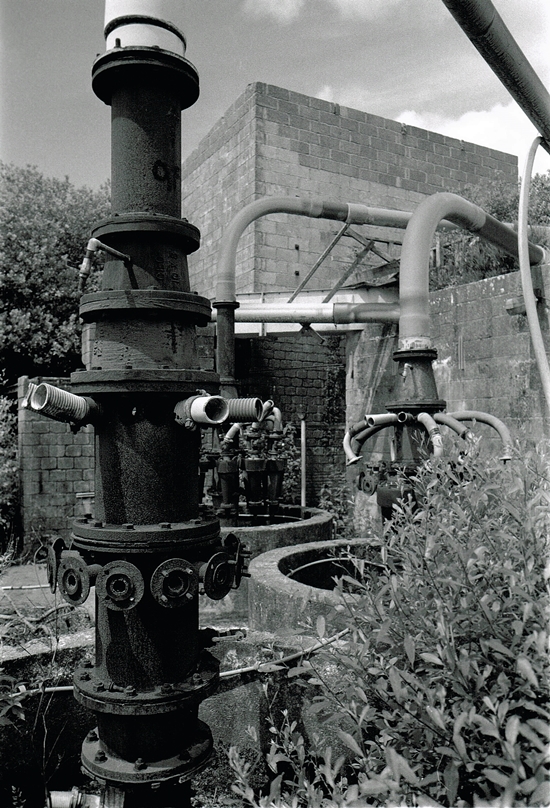
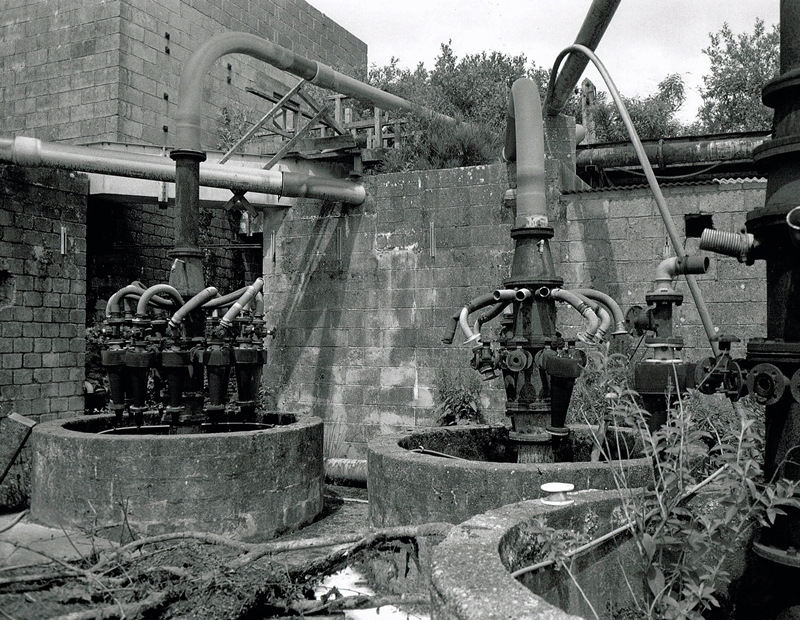
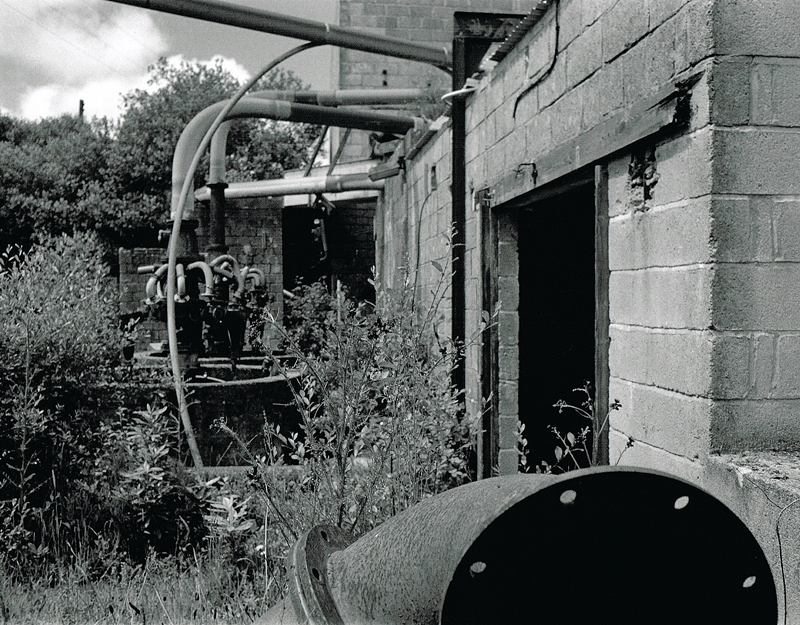
Driving around one of the pits I saw these disused Monitor huts. Huw stopped for me, it was a good photo opportunity. Mr Mike Knight has kindly written some words about his experiences as a Mining Engineer in the Clay Industry:
As promised I will give you some information from my experiences with the above equipment. The Monitors, Huts and Pumps were essential all ‘in house’ manufacture. Within English China Clays Lovering and Pochin ECLP. But this was later renamed ECC and finally Imerys. I can’t be certain as to whether the design was borrowed from other industries, but development was definitely progressed ‘in house’.
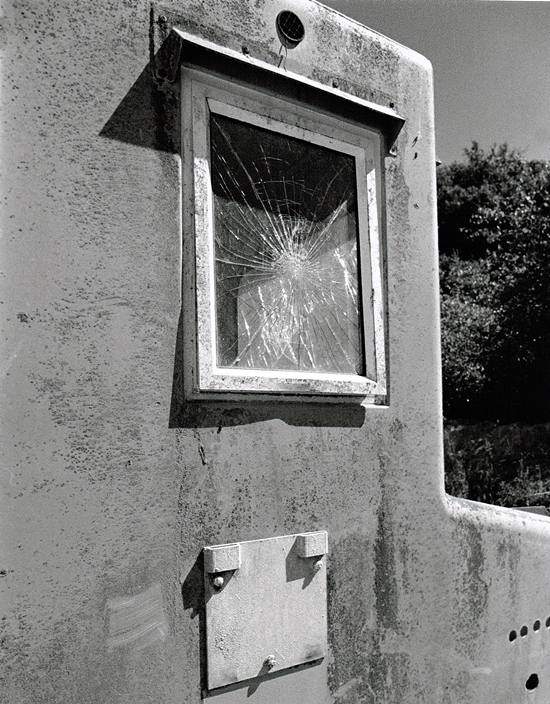
The Monitor Huts were manufacture at the ECC Engineering workshops at Drinnick in the village of Nanpean. These workshops employed a multi disciplined workforce ranging from fitters to welders through to carpenters and electricians. The huts were first manufactured in wood by the carpenters. Then moved through the workshop to have the aluminium cladding and blast screens fitted. They were then subsequently mounted on a fabricated skid frame. This enabled them to be moved around the base of the clay pit using a bulldozer and chains.
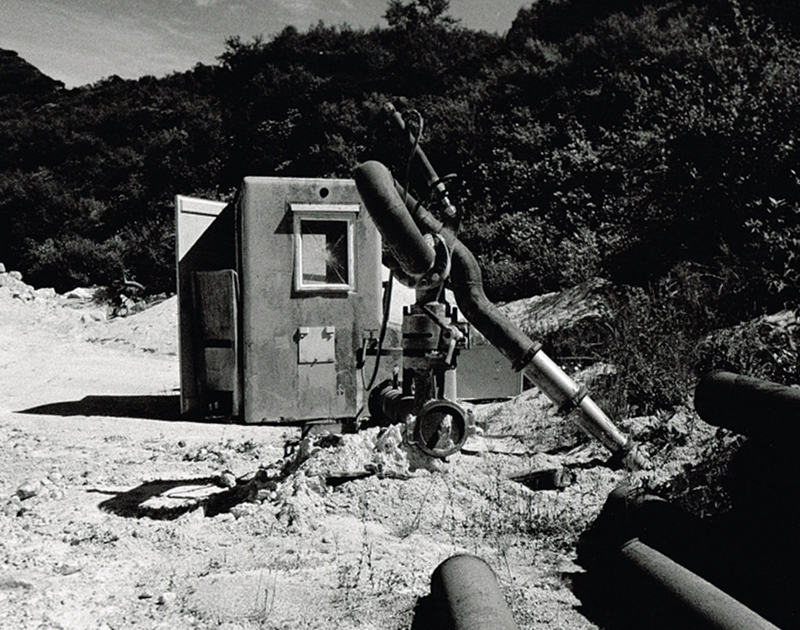
Next the huts were fitted out with manual of automatic controls for the monitor. This involved a consul and hydraulic fittings. The monitor could be used to manually aim at a clay seam or move within a preset pattern. Finally they were also equipped with a few creature comforts for the operators heater and kettle.
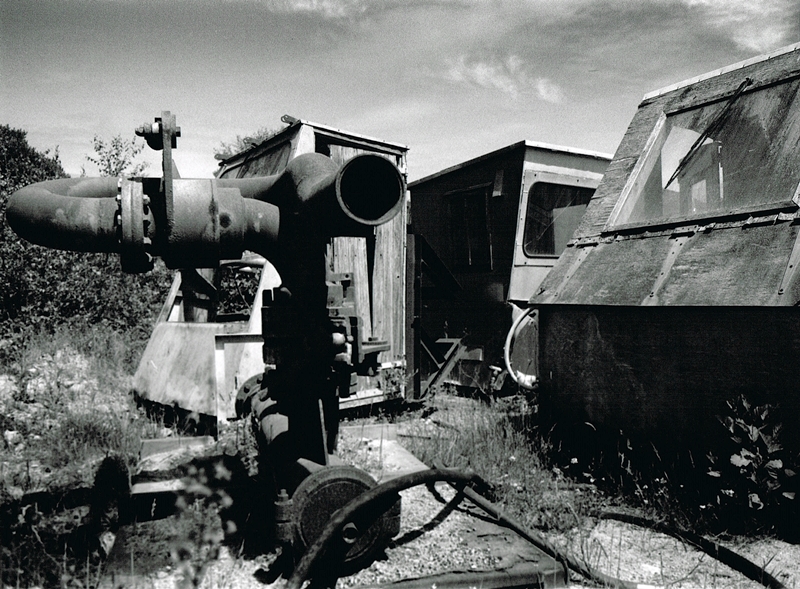
Basically the Monitor is a high pressure water nozzle. This water is aimed at the clay seam, washing the clay from the granite. Due to high pressures the hut needed to be protected from flying debris, hence the blast screens and toughened windscreens.
The huts were vacated during blasting operations but their structures were sometimes subjected to impact from flying rocks and debris.
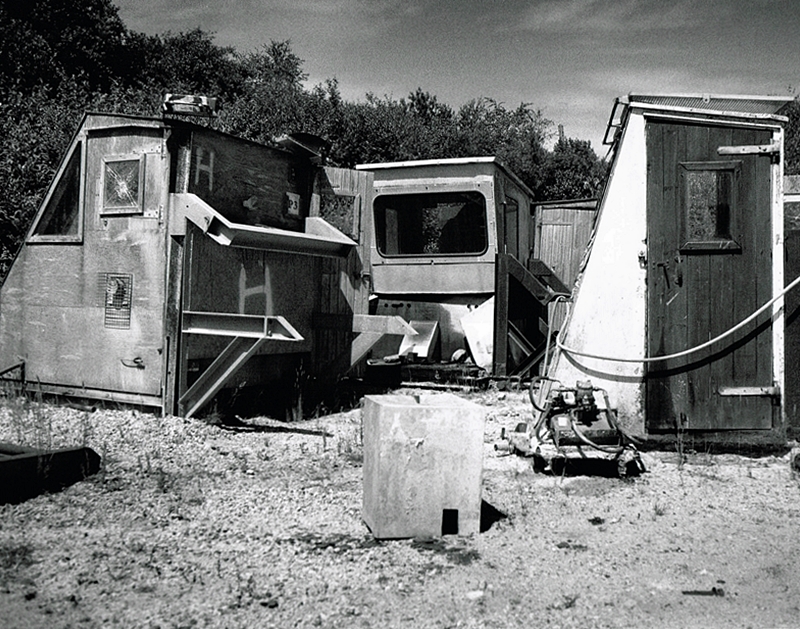
Both the huts and monitors were regularly returned to the workshops for repair and overhaul. Originally the huts and cladding were manufactured to an extremely rough guideline. In fact the carpenter made something with materials that ‘came to hand’.
Over the years a programme of standardisation took place with all huts and cladding being made to a set of drawings. Because this enabled spares to be held for either on site or workshop repair.
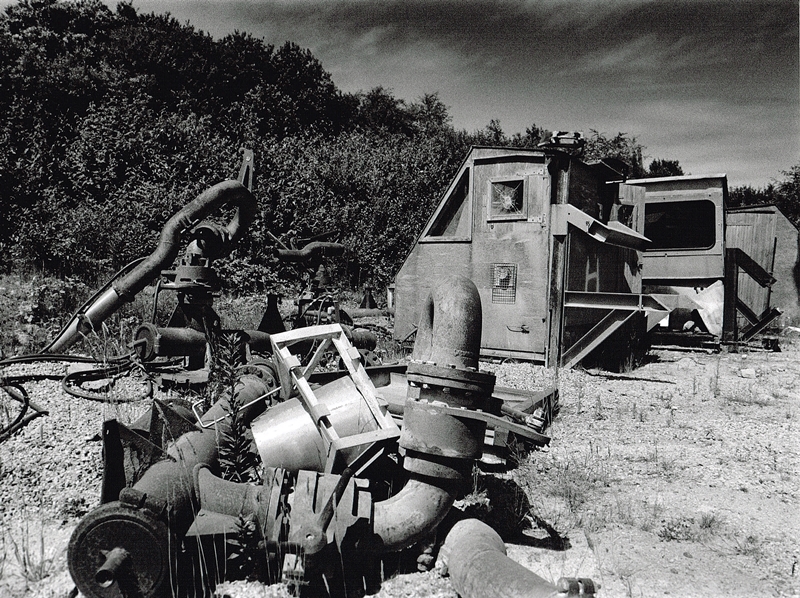
The monitors were manufactured at ECC’s sister workshops Charlestown Engineering. This was located just up the road from Charlestown Harbour. They came in two sizes 4″ and 6″, i.e. a 4″ or 6″ pipe size. The pipe bends and swivel joints within the monitor enabled accelerated flow and directional control of the water flow.
The monitor itself was on a purpose built skid frame. Then linked to its control system within the hut via hydraulic hoses. The water supply was provided using high pressure twin stage pumps, also manufactured ‘in house’.
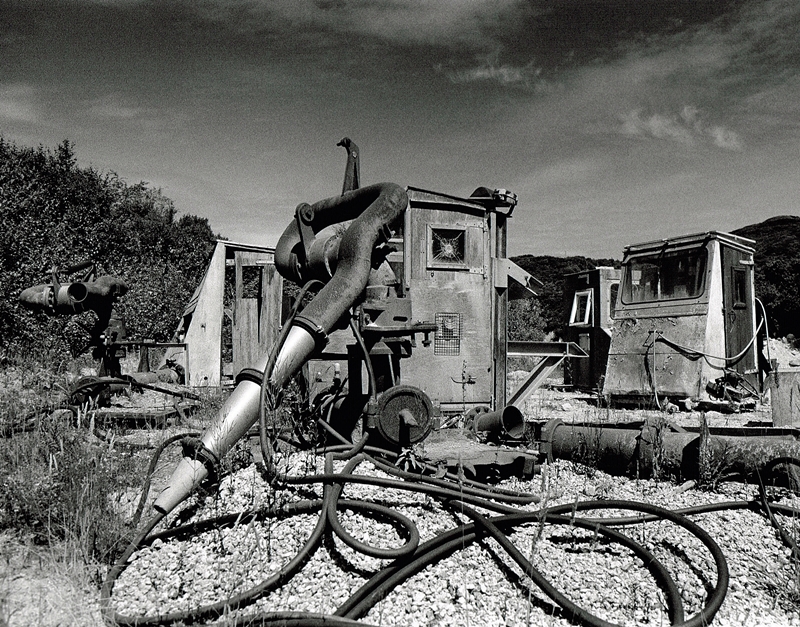
In its heyday the Engineering division of ECC employed some 1,000 people. The Charlestown site alone employed almost 300 people and included a Foundry and full manufacturing facilities. But, sadly as time moves on and traditional engineering declines all we have are memories and photographs.
My thanks to Mike for taking the time to write this information.
These sites are on private property. They should not be entered without permission, a suitable escort and health and safety equipment.
